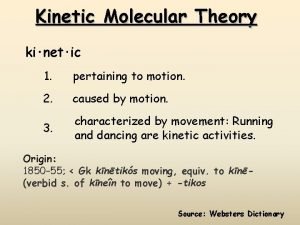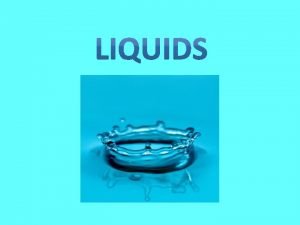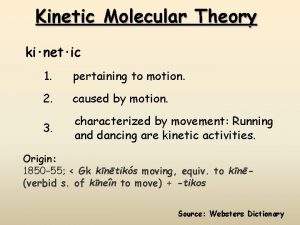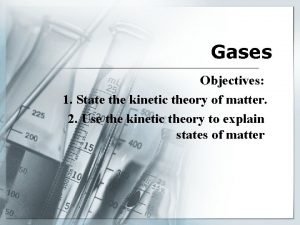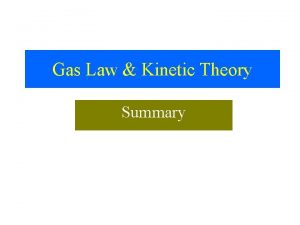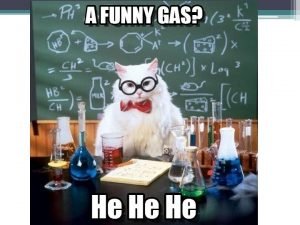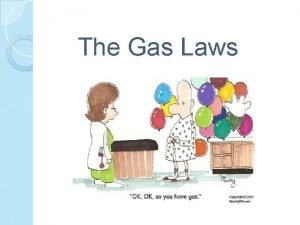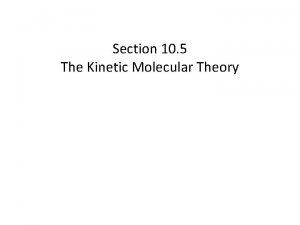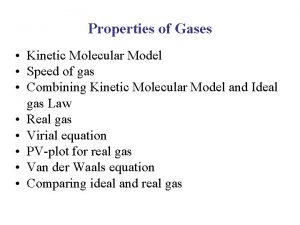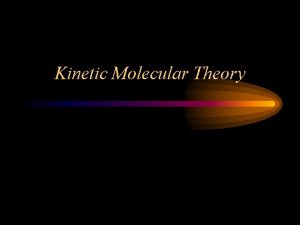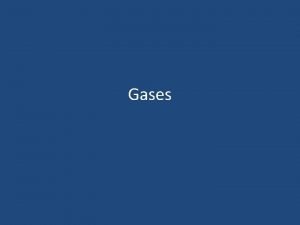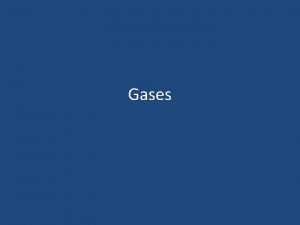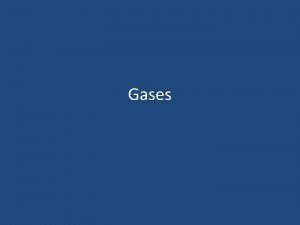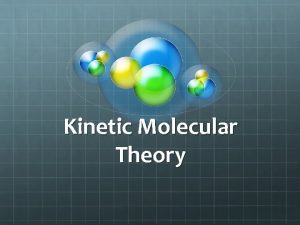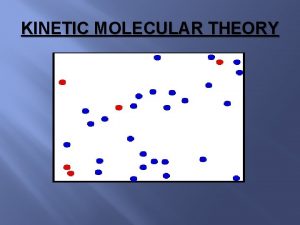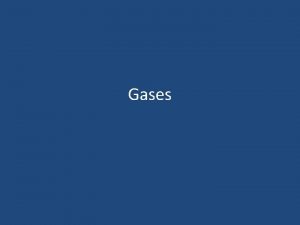Temperature r m s Physics Molecular Kinetic Theory












- Slides: 12

Temperature & r. m. s Physics – Molecular Kinetic Theory 11. 2. 4

A molecular view of gases § Firstly Charles and Boyle looked at gases via experimental methods. § At a later time Robert Hooke and Isaac Newton's work on considering gases by thinking of the mechanics of each particle and its interaction with the walls of a chamber was combined to provide us with another take on how to explain how gases behave. § This method was all designed around the interaction of a single particle and imaginary box around it. It is fairly complex and the derivation is not required for AS Physics. (only use of formulae. p = pressure = density c 2 = root mean square speed of particles

Results…. • This is a tricky formulae to apply properly as the units must be applied correctly. p = pressure in Pascal's Pa (Nm-2) = density or mass / volume (kgm-3) = root mean square speed of the particles (m 2 s-2)

Alternative…. • If we substitute in mass, volume and “N” – number of particles we can also express the same formula as; p = pressure in Pascal's Pa (Nm-2) = density or mass / volume (kgm-3) = root mean square speed of the particles (m 2 s-2)

Key Assumptions I – Newton's Laws 1. Every object in a state of uniform motion tends to remain in that state of motion unless an external force is applied to it. (mv – momentum) 2. The relationship between an object's mass m, its acceleration a, and the applied force F is F = ma. 3. For every force there is an force equal acting in the opposite direction. A ↔B

Key Molecular Assumptions II 1. A gas consists of point molecules (i. e. volume particles << volume container 2. Gas molecules behave randomly 3. Molecules collide elastically 4. Except when in collision molecules have negligible forces on each other 5. Duration of collisions is << time between collisions themselves

More on r. m. s The pressure exerted by a gas arises as a result of gas molecules bombarding the walls of the container. There are very many molecules in a typical sample of gas, and the molecules have a whole range of speeds. The graph below shows a Maxwellian distribution of speeds. You need to realise that you are working out this speed in this distribution for use in calculations and some particles will be faster and some slower. we can also make the following useful assumption; NB: Do not worry about how this graph is made just the idea behind it

Work it out from scratch… It is unlikely that you will be asked to completed this task in an exam. However, you should understand how it is done. Quite simply; 1) examine the number of particles and their individual speeds 2) Take into account direction and remove this by squaring 3) Summate and take an average. To get the RMS speed.

Useful definitions… Examples… 1 mole of carbon atoms contain 6. 022 x 1023 particles with a mass of 12 g or 0. 012 kg 2 moles of molecular oxygen contain = 2 x 6. 022 x 1023 particles and mass is 32 g x 2. 2 moles of O 2 gas contain 2 x 6. 022 x 1023 particles of gas. But mass 64 g x 2. NB: Be sure you know the difference during calculations

Molecular Speeds Case Study… An example of r. m. s. speeds

Molecular Speeds Case Study… An example of r. m. s. speeds

Molecular Speeds Case Study… An example of r. m. s. speeds
 Kinetic molecular theory of liquids and solids
Kinetic molecular theory of liquids and solids Kinetic molecular model of gases
Kinetic molecular model of gases Kinetic molecular theory volume
Kinetic molecular theory volume Adhesive force
Adhesive force Kinetic molecular theory of liquids
Kinetic molecular theory of liquids Kinetic molecular theory
Kinetic molecular theory Kinetic theory def
Kinetic theory def Kinetic molecular theory timeline
Kinetic molecular theory timeline Charles law in terms of kinetic molecular theory
Charles law in terms of kinetic molecular theory Kinetic theory postulates
Kinetic theory postulates Avogadro's law
Avogadro's law Postulates of kinetic theory of gases
Postulates of kinetic theory of gases Kinetic molecular theory formula
Kinetic molecular theory formula


